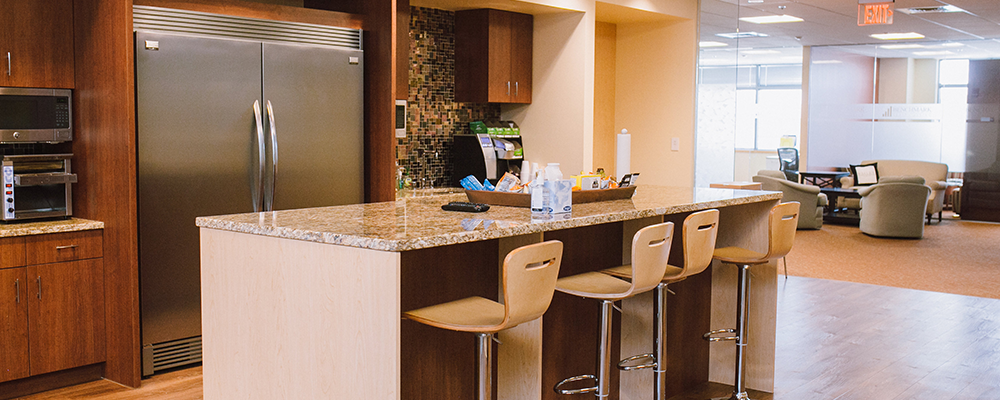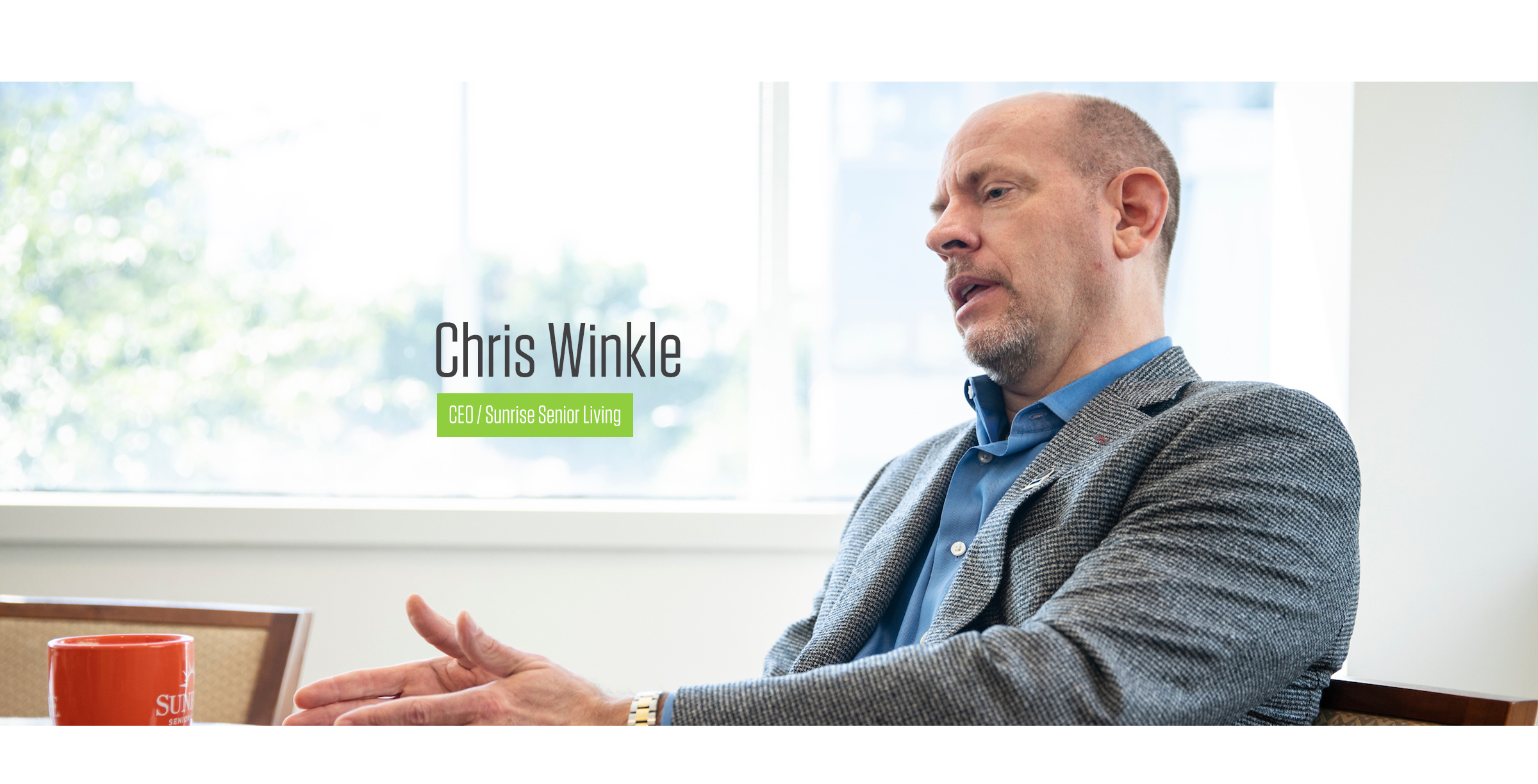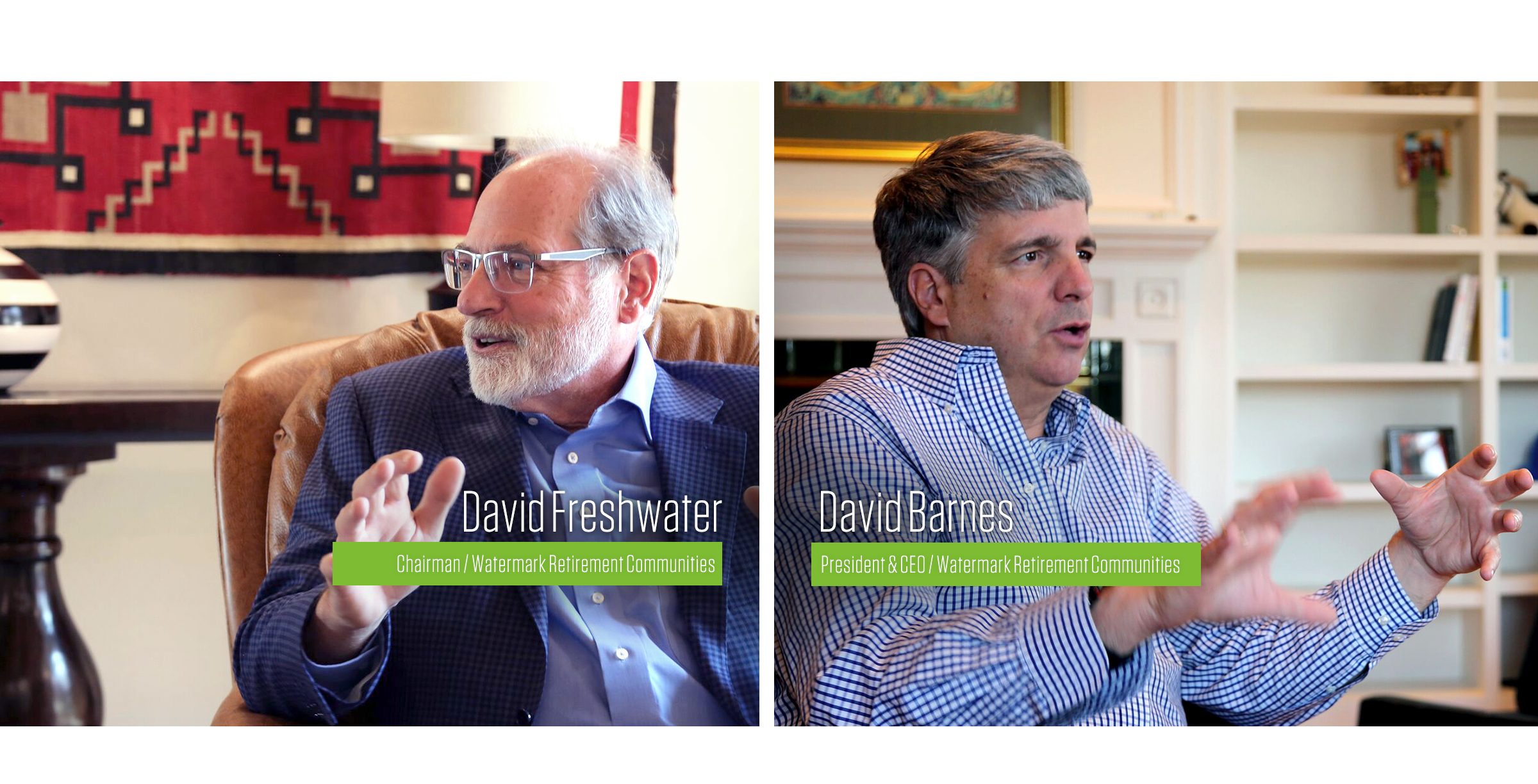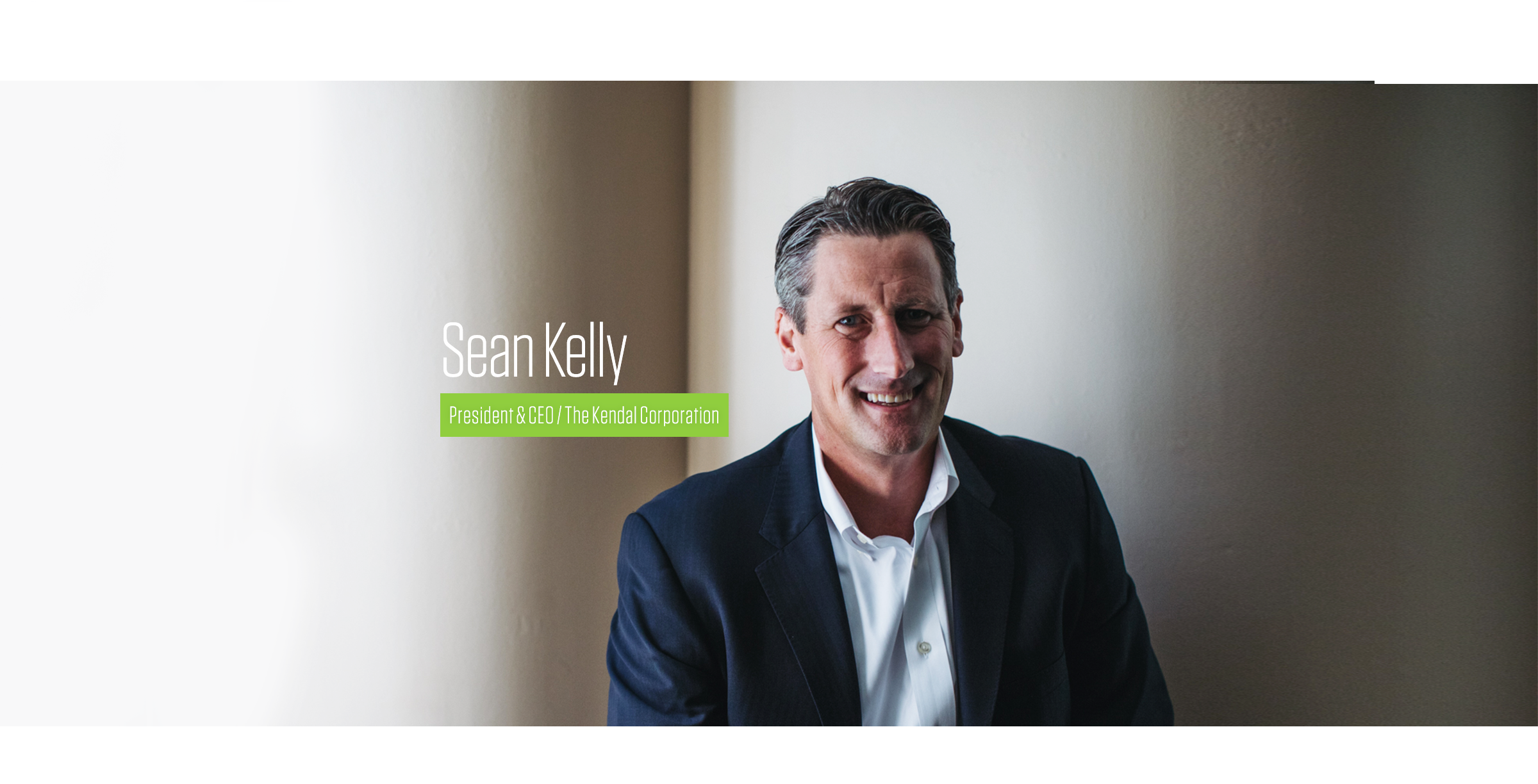Meet Tom Grape, chairman and CEO of Benchmark Senior Living. Grape started Benchmark from the ground up almost 20 years ago, and essentially brought the assisted living concept to Massachusetts, where the company is based. He has seen the senior living industry evolve through recessions and booms and is readying for the next phase ahead.
We sat down with Tom in his Waltham, Mass. office to get his take on an entrepreneur’s approach to the senior living business, where Benchmark sees itself as a leader among its peers, and why senior living must solve one of its biggest problems—turnover.
Starting Benchmark
Tell me about how you got into senior living and how Benchmark got its start.
The real estate company I was with at the time had teamed up with an operator—in a venture that did not work out. I stayed with that company for a few more years and then tried to start my first venture in senior housing in 1989, which you may remember was also a recession year. Every time we met with our prospective backer, he was getting paler and paler and ultimately I ran out of money.
I then joined a company that had some early stage assisted living communities. This was in 1990, and I was traveling all over. I was living in Boston where [that company] didn’t have any communities, and they wanted me to move to a different city that I didn’t really want to move to. There was, at that time, no assisted living in Massachusetts, so I pushed a local nursing home company that had a very good reputation to develop assisted living. And we did.
I started a new affiliate of this nursing home company. We built 13 or 14 assisted living communities and were very successful—including the first purpose-built assisted living community in Massachusetts. I was one of the founders of The Assisted Living Federation of America [now Argentum] and founded Mass-ALFA, the Massachusetts affiliate. We helped pass the legislation in Massachusetts and created the category in Massachusetts. The principal of the parent company decided to sell the company in 1996. I started Benchmark in January of 1997.
What was your goal back then?
The goal was to start the company and make it solvent first. We began with a business plan—we didn’t have any communities at the outset—we’ve ended up acquiring most of the communities we had built at the previous company over time. We’ve developed a number of new communities and have acquired communities since. For the first five or six years I frequently went home and said, “I don’t know how I’m getting payroll next week.” We figured our way through it.
How are things different today from when you started?
The company has changed a lot. It’s now not a start-up company, so people who join Benchmark now are joining a medium-sized or larger company which has a lot of resources and a lot of policies in place, a lot of systems and so on. In the early days I knew most of the people and it was a lot more informal. Now it feels like a bigger company, which I think is in some ways good and in some ways not so good.
We’re bigger, we’re much more capable and deeper in our capabilities and our people strength and our reach and our capacities. We’re sometimes slower to do things, and sometimes more bureaucratic than we’d like to be.
Does that get frustrating?
Yes, it does. I’m not always as patient with those things as some people would like me to be.
Was there a defining moment for you as an entrepreneur when you knew you wanted to start this company?
I started two companies before Benchmark. The first one didn’t work, as I mentioned; I ran out of money. I guess I feel like every entrepreneur needs to have one of those [experiences] to determine if you’re really an entrepreneur. The interesting moment for me was when I knew that that wasn’t going to work but I had to do it again. A lot of people of course would conclude that it wasn’t going to work and say, “Oh my God I’m never doing that again; that was a mistake.” I knew I was an entrepreneur when I knew I had to do it again, and I learned a lot of lessons and I wanted to apply those lessons.
For me the bigger revelation was that I grew up in Fairfield, Connecticut, my dad worked for Exxon for 35 years and everybody around me in that part of Connecticut worked for big companies, so I didn’t know what an entrepreneur was. In college and growing up I wanted to work in marketing, and I wanted to work at a big company because that’s what everybody did.
My first job out of college was at Procter & Gamble in marketing. Being an entrepreneur was the furthest thing from my mind. It was a big step for me to go from P&G, the mecca of marketing, to change careers into real estate, and to ultimately change careers from an established real estate company to starting my own company. That was a big shift from what I had been pretty clear I was going to do for my career, for the rest of my life. I discovered what it was really all about.
Leadership
What is your definition of leadership?
Being able to establish a direction and being able to motivate others to be able to follow and pursue that course.
What’s been the biggest challenge Benchmark has faced and how did you overcome it?
Growing pains. Starting the company was certainly very hard, and yet starting any company is hard. The great recession was difficult, but I’m actually really proud of how we managed our way through it. A lot of our competitors had to cut costs, as we had to face those pressures. A lot of our competitors were raising the eligibility requirements for benefits or cutting hours. The only thing we did was the senior management team did not take bonuses that year, and we asked everyone else in the company to defer their bonuses from March to June—that’s it. All of our competitors were taking much more draconian steps. Our view was we weren’t going to do that and I’m really proud. We talk a lot about our culture and backing our associates, and we walked our talk during that time.
I think it’s really hard to grow a company and to keep things in alignment.
Just in senior living? Or in general?
Any company. The resources are never what you want them to be and some things always get out ahead of others. It’s a very difficult thing to keep the culture in alignment with the resources, or the growth in alignment with the people that you’ve got. It remains a tricky thing.
What’s the biggest risk you’ve taken in your career?
In the early years of [Benchmark], I was obligated for a lot more money than I was worth. My board to this day comments about my risk profile having been extreme.
When they say it’s extreme, did they tell you that back during the great recession or when you guys started?
This predates the great recession; back to the story of: I thought I was a big company guy and all of a sudden discovered that I was more of a risk-taking entrepreneur than I had ever appreciated. I didn’t really think of myself as any sort of cowboy risk-taker at the time. I believed in what we were doing and I knew I was taking the risks, I wasn’t doing it blindly, but I believed in it and did it. Not a lot of other people would’ve done that.
I thought I was a big company guy and all of a sudden discovered that I was more of a risk-taking entrepreneur than I had ever appreciated.
What’s the best piece of advice you’ve received in your career?
I don’t know if I remember any particularly pithy sayings, but I guess a piece of advice I would give myself is to know who you are so that you are being true to yourself and your choice of fields, and the role you’re choosing to take, your strengths and weaknesses as a manager; that you get who you are and you’re open to feedback about it and you’re true to yourself.
Who would you consider a mentor and how has that person helped your career?
I can think of several. I consider that Benchmark [as a company] has had a mentor.
The first investor in Benchmark was Peter Small, the CEO of a real estate company I used to work for, who is still on our board today. He was our first investor and he was our angel. During our first few years when I did not know how I would meet payroll, I’d pick up the phone every couple of weeks and say, “Peter, can I buy you a cup of coffee?” and he always knew what that meant. He would write me a check every time. I always paid him back and he’s done very well on his investments in Benchmark. Benchmark wouldn’t be here had it not been for his support. He was the rock of Gibraltar of Benchmark in the early years. We have an award named after him that we give annually to the community of the year; it’s called the Peter Small Award. He’s been Benchmark’s mentor and everybody here is very grateful for his support, not just financially, but his advice and all the rest. He’s been terrific.
What are some of your greatest strengths as a leader?
I can rally people to support. I’m pretty creative, and I have a lot of ideas. Sometimes our biggest strengths are our biggest weaknesses. That cuts both ways for me. I think I’m pretty good at seeing ahead and have pretty good vision. I think I’m pretty good strategically. I’ve learned, I didn’t really begin this way, but I’ve become pretty capable on the deal side.
I’m sort of an idea-a-week guy. I’m not very disciplined about, “Here’s the course we’re going to stick with for the next six months.” I’m usually changing direction regularly.
Now we’ve got to talk about the other side. Is your weakness that you’re too creative?
I’m sort of an idea-a-week guy. I’m not very disciplined about, “Here’s the course we’re going to stick with for the next six months.” I’m usually changing direction regularly. Fortunately, I’m blessed with a terrific president and Chief Operating Officer, Stephanie [Handelson], who is a terrific counterpoint to my changing direction all the time. She’s been great in that regard and many others.
The Next Generation of Leaders
Do you think the industry does a good job of taking people on the front lines (and when I say ‘front lines’ I mean more Executive Director than caregiver) and helping those people go to the next level in their careers?
I think it’s very spotty. There have been some great success stories, at Benchmark and other companies, of people who have progressed. Stephanie began as an Executive Director and she’s been a super success story working her way up.
There are too many examples of other people who may have been very successful as Executive Directors but then who aren’t developed or aren’t able to progress beyond that either because of their own inabilities or because they weren’t developed correctly or given the opportunities or whatever. I think it’s too spotty, it’s not consistent enough, and I think it’s a problem for the industry.
What is Benchmark doing currently to develop leaders, and what do you think you could do better?
We’re doing a lot of things. We have an Emerging Leaders Program where we take department heads and put them through a training program that takes place over a year and includes a variety of different elements. Secondly, we have an Executive Director in Training Program run by one of our senior, most successful Executive Directors. This is his full-time focus.
We have Benchmark University, which offers an ongoing array of different courses. We have a Benchmark University Training Center here at our home office so people come here and we can pop in and participate in those offerings. We do a lot of things. It’s never enough. We’d like to do nothing but promote from within, ultimately. We’ve not been as successful as we would like, notwithstanding a lot of efforts, but we’re doing better than most.
The Future of the Industry
What is the industry’s biggest challenge?
Talent. Finding, developing and retaining sufficient and qualified talent for our industry’s needs. Our industry continues to have unacceptable levels of turnover. The workforce and the ratio of caregivers to seniors are under dramatic pressure in the coming couple of decades. We’ve got a big issue. I think the association initiatives are very helpful, but everybody has to do more.
During an interview from 2012, you told us that “affordable assisted living is difficult to accomplish.” Do you still think that’s true today?
Absolutely. I think you take a look at the economics of assisted living and 70 cents of every dollar covers operating expenses, mostly labor. Twenty cents covers debt service in the building, and 10 cents (plus or minus) is cash flow.
I could give you the building for free and the rent would go down a bit, and then you look at operating expenses. You can trim around the edges, but you can’t really materially reduce staffing costs or utilities or food costs without cutting into the bone of what the service offering is.
Without some material subsidies—some states have material subsidies, but not many do—or without some substantially new operating model, which I’ve not yet seen, it is difficult to offer truly affordable assisted living other than on a handful of units in a building. It’s a tough nut to crack in a material way.
Do you think technology will help to make that more possible?
I think people think technology is going to fix everything, and I don’t really believe that. Do I think technology will help? Sure. Do I think technology is the answer to making assisted living more affordable? No, I don’t because it’s going to remain a very heavily people-dependent business even with the introduction of more technology. I guess it depends on your definition of affordable. Will it bring it down to folks who are at the Medicaid level? No, technology by itself will not do that.
What does the future of the industry look like?
The future of senior living is very bright and will look very different than it looks today. The baby boomers are now the adult children, and the baby boomers have turned everything on their heads that they’ve ever touched.
The baby boomers like things the way they like it, when they want it. I think our industry is still sort of like Model T. See any color Model T you want as long as it’s black.
Right now assisted living is all rental. Well, people want to be able to pay for it in different ways. They want to get their meals when they want them. I think it’s going to get turned on its head.
People want rural, they want high-rise, they want urban, they want mixed-use, they want services. What assisted living used to be, years ago, was more full-service. The population has aged and has become frailer on average. The service package has not really kept up, and it’s not really full-service anymore because everybody is heading to a range for more services to come into the building. The industry hasn’t kept up in a whole host of ways. Consumers will demand the industry to change in ways that we haven’t so far.









